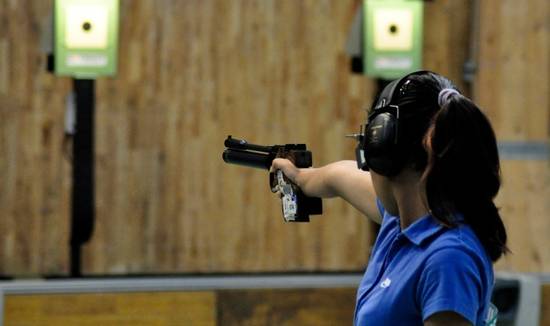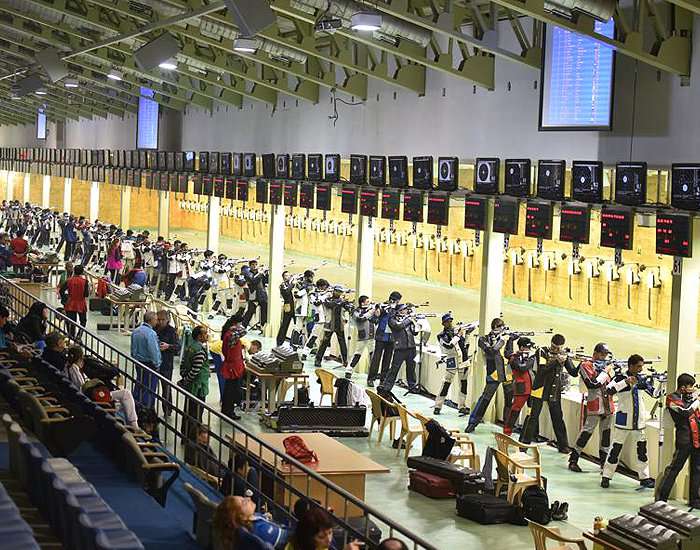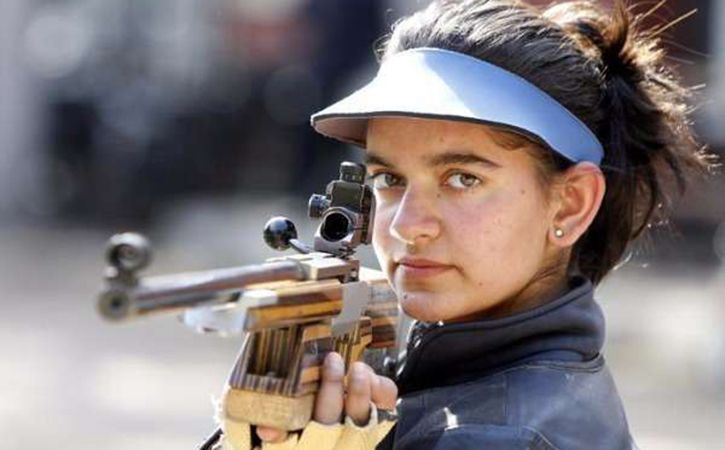Featured
Why every fan must attend the Shooting World Cup in Delhi

From Feb 22-27, the Dr Karni Singh Shooting Range in Tughlakabad, New Delhi will play host to the first World Cup of 2019, and the biggest shooting event to ever come to Indian shores.
In recent times, Delhi has seen quite a few elite shooting events come to Karni. 2016 saw the advent of the Asian Olympic Qualifier which offered Olympic Quotas for Rio. 2017 saw a World Cup at Karni with rifle, pistol and shotgun all included, besides the first ever mixed team events at a global competition (even though they were accorded the status of “test events”). Karni has also hosted the 2015 Asian Airgun Championships and the shooting event at the Commonwealth Games. However, the upcoming World Cup is slated to be bigger than all of them.
While the 2017 World Cup included shotgun which the 2019 World Cup does not, the 2019 event is expected to be contested much more hotly with all the top rifle/pistol shooters of the world participating, as it is an Olympic Qualifier. It will be offering 2 Olympic Quotas in each of the 8 individual events that will be contested. And while Karni has hosted the Asian Olympic Qualifier in the past, an Asian event can never really compete with the star power, quality and prestige of a truly global event.
Following a World Cup
 Dr Karni Singh Shooting Hall
Dr Karni Singh Shooting Hall In order to truly appreciate and enjoy a shooting World Cup in a pre-Olympic year, one needs to understand how Olympic qualification works (explained in three parts here: Part 1, Part 2, Part 3). This is because due to the various eligibility requirements for Quotas, the medallists at a World Cup can often be very different from the Quota winners.
For example, consider the men’s 10m Air Rifle event at the upcoming Delhi World Cup. Let’s say that of the 8 shooters who reach the final, two are Croatians. However, Croatia has already secured the maximum 2 Quotas in this event at the 2018 World Championships in Korea and is thus ineligible to win any further Quotas. Another finalist may be Russian Sergey Kamenskiy, who too is ineligible having won Gold in Korea. Another finalist may be Chinese Yang Haoran, who secured a Quota in Korea, but in the 50m Rifle 3 Positions event and is thus also ineligible. This would mean that effectively, only 4 of the 8 finalists would be competing for the two available Quotas. On the other hand, if all 8 finalists are eligible for Quotas, then even the Bronze medallist will end up missing out.
Once a fan understands the qualification process, following such arcs for Olympic Quotas, in addition to following the arc for World Cup medals, can prove to be an excellent additional source of enjoyment.
Fan Tip: An updated and accurate list of the shooters who have already won Quotas for Tokyo is always available at good old Wikipedia. This can be greatly helpful in figuring out which shooters are eligible for Olympic Quotas during a World Cup.
As one can imagine, the intersection between Quota winners and medal winners continues to reduce as the World Cups go by and more and more shooters secure their spots at Tokyo. Some countries, in order to maximize their Quotas, may even decide to actively refrain from sending Quota winners to subsequent World Cups, thus allowing other Quota eligible shooters to compete (World Cups are restricted to 3 shooters per country per event). The downside, of course, is preventing your top shooters from testing their mettle against the best in the world. As a compromise, NRAI has already declared that Quota winners will not be sent for the Asian Championships but will continue to be sent for World Cups.
Current Scenario for India
 Anjum Moudgil
Anjum Moudgil India currently holds 2 Quotas for Tokyo, both in the women’s 10m Air Rifle event. They were won by Anjum Moudgil and Apurvi Chandela at the 2018 World Championships in Korea.
Based on our current strength, India would be expected to win a host of other Quotas by the time Tokyo arrives. We won a total of 12 Quotas for Rio, and should hopefully top that for Tokyo, even though the available Quotas have reduced with the advent of the mixed team events. With the home advantage in Delhi, Indian shooting would be disappointed with anything less than another 2-3 Quotas.
While women’s shotgun has never been India’s best suit, our men’s shotgun shooters have also unfortunately been struggling in recent times. However, our pistol shooting is probably at the most competitive it has even been, and the rifle shooters are also doing exceedingly well.
We are capable of winning Quotas at all eligible events in Delhi, with our best chances probably coming in both the 10m Pistol Events, and the women’s 50m Rifle 3 Positions event being a possible weakness. This is because our best women’s 3 positions shooter, Anjum Moudgil, has already secured a Quota, but in the 10m Air Rifle event. In fact, in time, India may unfortunately come to regret this Quota a little bit, as currently Anjum seems to be the only one capable of winning a Quota in the 3 positions event, but a number of other shooters like Mehuli Ghosh or Elavenil Valarivan could have also secured the 10m rifle Quota.
The lack of marketing
The NRAI has done a marvellous job to bring top level shooting to India. However, one aspect it has clearly faltered at is marketing the events. Most fans don’t even know when an event is going on in Delhi, those who do know may not grasp the magnitude of the event, and the few who do may be turned off from attending as they are unable to buy tickets. Thankfully, though, starting from the Delhi World Cup, shooting world cups will be boradcast on TV.
During my time at IIM Bangalore, one of our marketing professors related an anecdotal story. An electronics store owner once wanted to get rid of his own personal old TV set. While it was obviously nowhere near new, it was in decent shape and worked fine. The owner put the TV set in a corner of his shop and labelled it as “Free”. For 3 months, no customer gave it a second look. Then, one morning, the owner labelled it as $20, and it was gone by the afternoon.
In this writer’s opinion, one of the biggest mistakes of the NRAI is not selling tickets for these prestigious events and keeping the entry free. “Free” devalues the event itself and sends a message that it is not worth attending. “Free” means that fans are unable to get tickets in their hands. While tickets need to be sold at only a nominal price and are unlikely to earn much revenue for NRAI, they act as a guarantee for fans that they will not be treated as unwanted and/or prevented from entering the venue by an overzealous uninformed security guard. Tickets also act as de-facto “Save the Date” cards and remind fans of when the event is and to keep their schedule open.
Why a fan should attend
Despite the NRAI’s lack of marketing nous, it does not mean that the event is not worth attending. With Delhi being the first World Cup of the season, all shooters are still fighting tooth-and-nail for the scarce Olympic Quotas, except the lucky few who won them at the World Championships in Korea or the Pan-Am Championships in Mexico. This means that almost all the top rifle/pistol shooters in the world, and of course all the top Indian names, would be expected to make the trip to Delhi, resulting in a grand event with Olympic implications.
Besides providing an opportunity to watch your heroes in the flesh-and-blood, the sights and sounds of the shooting range can be as delightful as the cricket ball hitting the bat or the tennis ball hitting the racquet, and noticing how truly small the targets are is likely to provide an increased appreciation for the sport. Attending a Shooting World Cup also provides the rare opportunity for fans to watch the qualification stages, and in extremely close proximity. While the finals can be ordered and controlled, most shooting qualifications simply set a time period and shooters can take their shots within this period as and when they please.
It can thus be quite interesting to observe the varying cboncentration and focussing processes and rhythms of different shooters. Some like to sit from time to time, some walk around, others don’t like to leave their positions. Some are constantly chatting with their coach, others don’t want to be disturbed. Some want to be among the first to finish, others take their time (and sometimes end up in a huge time pressure towards the end). Some shoot a multitude of sighting shots (scores of which can also be observed by fans), others move to competition shots the moment they hit a couple of 10s. All the action is tracked by a giant live scoreboard making it easy for the spectators, and the coaches, to follow the action.
Fans may also get the opportunity to sit right next to current and past shooters themselves, who often move in the same spectator areas when watching their fellow shooters in action, and are generally happy to oblige for autographs and selfies.
And, of course, the finals hall, while not loud, is always extremely electric and infectious, especially when a home shooter is in striking distance of a medal, or a Quota.
See you all at Karni.
